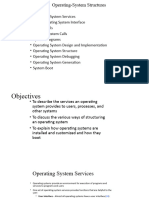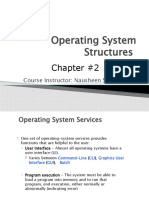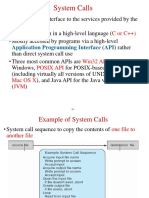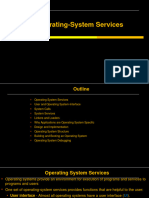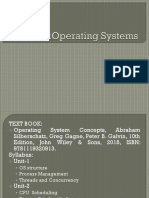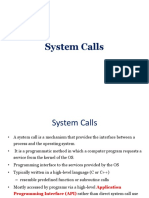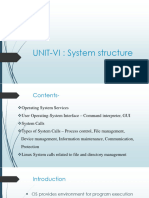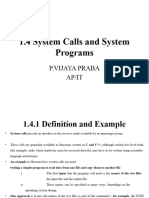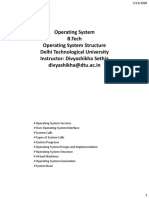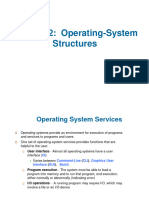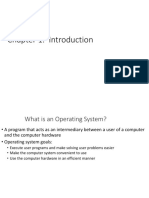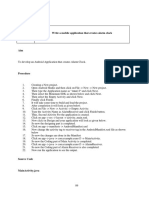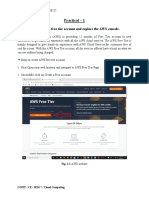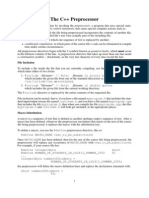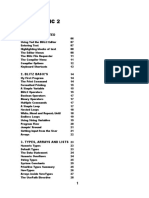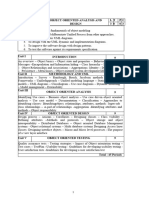0% found this document useful (0 votes)
37 views31 pagesOperating System Structures
The document discusses operating system services and structures. It describes how operating systems provide functions like user interfaces, program execution, I/O operations, and file manipulation. It then discusses different types of user interfaces like command line, graphical user interfaces, and touchscreen interfaces. The rest of the document focuses on system calls, how they are implemented and types of common system calls for processes, files, devices, communications and more. Examples of Windows and Unix system calls are also provided.
Uploaded by
upeshithaCopyright
© © All Rights Reserved
We take content rights seriously. If you suspect this is your content, claim it here.
Available Formats
Download as PDF, TXT or read online on Scribd
0% found this document useful (0 votes)
37 views31 pagesOperating System Structures
The document discusses operating system services and structures. It describes how operating systems provide functions like user interfaces, program execution, I/O operations, and file manipulation. It then discusses different types of user interfaces like command line, graphical user interfaces, and touchscreen interfaces. The rest of the document focuses on system calls, how they are implemented and types of common system calls for processes, files, devices, communications and more. Examples of Windows and Unix system calls are also provided.
Uploaded by
upeshithaCopyright
© © All Rights Reserved
We take content rights seriously. If you suspect this is your content, claim it here.
Available Formats
Download as PDF, TXT or read online on Scribd
/ 31
